Ziv Epstein
Deceptive AI systems that give explanations are more convincing than honest AI systems and can amplify belief in misinformation
Jul 31, 2024Abstract:Advanced Artificial Intelligence (AI) systems, specifically large language models (LLMs), have the capability to generate not just misinformation, but also deceptive explanations that can justify and propagate false information and erode trust in the truth. We examined the impact of deceptive AI generated explanations on individuals' beliefs in a pre-registered online experiment with 23,840 observations from 1,192 participants. We found that in addition to being more persuasive than accurate and honest explanations, AI-generated deceptive explanations can significantly amplify belief in false news headlines and undermine true ones as compared to AI systems that simply classify the headline incorrectly as being true/false. Moreover, our results show that personal factors such as cognitive reflection and trust in AI do not necessarily protect individuals from these effects caused by deceptive AI generated explanations. Instead, our results show that the logical validity of AI generated deceptive explanations, that is whether the explanation has a causal effect on the truthfulness of the AI's classification, plays a critical role in countering their persuasiveness - with logically invalid explanations being deemed less credible. This underscores the importance of teaching logical reasoning and critical thinking skills to identify logically invalid arguments, fostering greater resilience against advanced AI-driven misinformation.
Art and the science of generative AI: A deeper dive
Jun 07, 2023Abstract:A new class of tools, colloquially called generative AI, can produce high-quality artistic media for visual arts, concept art, music, fiction, literature, video, and animation. The generative capabilities of these tools are likely to fundamentally alter the creative processes by which creators formulate ideas and put them into production. As creativity is reimagined, so too may be many sectors of society. Understanding the impact of generative AI - and making policy decisions around it - requires new interdisciplinary scientific inquiry into culture, economics, law, algorithms, and the interaction of technology and creativity. We argue that generative AI is not the harbinger of art's demise, but rather is a new medium with its own distinct affordances. In this vein, we consider the impacts of this new medium on creators across four themes: aesthetics and culture, legal questions of ownership and credit, the future of creative work, and impacts on the contemporary media ecosystem. Across these themes, we highlight key research questions and directions to inform policy and beneficial uses of the technology.
Trash to Treasure: Using text-to-image models to inform the design of physical artefacts
Feb 01, 2023Abstract:Text-to-image generative models have recently exploded in popularity and accessibility. Yet so far, use of these models in creative tasks that bridge the 2D digital world and the creation of physical artefacts has been understudied. We conduct a pilot study to investigate if and how text-to-image models can be used to assist in upstream tasks within the creative process, such as ideation and visualization, prior to a sculpture-making activity. Thirty participants selected sculpture-making materials and generated three images using the Stable Diffusion text-to-image generator, each with text prompts of their choice, with the aim of informing and then creating a physical sculpture. The majority of participants (23/30) reported that the generated images informed their sculptures, and 28/30 reported interest in using text-to-image models to help them in a creative task in the future. We identify several prompt engineering strategies and find that a participant's prompting strategy relates to their stage in the creative process. We discuss how our findings can inform support for users at different stages of the design process and for using text-to-image models for physical artefact design.
Social influence leads to the formation of diverse local trends
Aug 17, 2021



Abstract:How does the visual design of digital platforms impact user behavior and the resulting environment? A body of work suggests that introducing social signals to content can increase both the inequality and unpredictability of its success, but has only been shown in the context of music listening. To further examine the effect of social influence on media popularity, we extend this research to the context of algorithmically-generated images by re-adapting Salganik et al's Music Lab experiment. On a digital platform where participants discover and curate AI-generated hybrid animals, we randomly assign both the knowledge of other participants' behavior and the visual presentation of the information. We successfully replicate the Music Lab's findings in the context of images, whereby social influence leads to an unpredictable winner-take-all market. However, we also find that social influence can lead to the emergence of local cultural trends that diverge from the status quo and are ultimately more diverse. We discuss the implications of these results for platform designers and animal conservation efforts.
Comparing Human and Machine Deepfake Detection with Affective and Holistic Processing
May 13, 2021
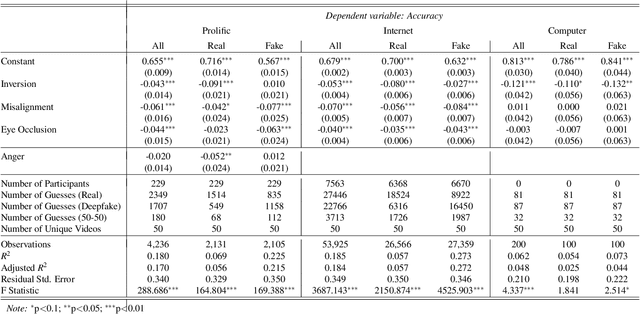
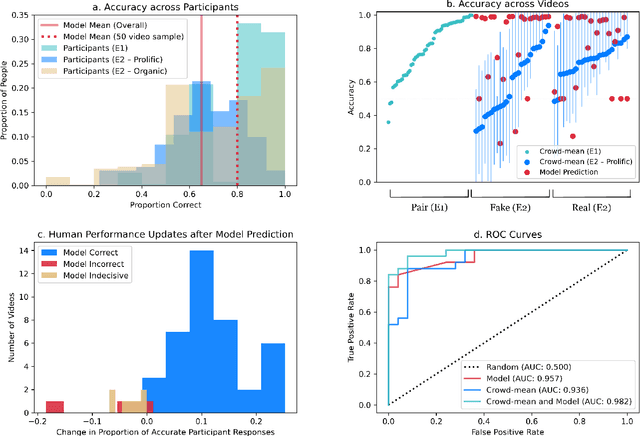
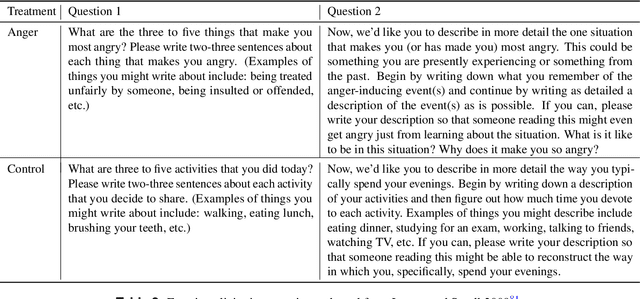
Abstract:The recent emergence of deepfake videos leads to an important societal question: how can we know if a video that we watch is real or fake? In three online studies with 15,016 participants, we present authentic videos and deepfakes and ask participants to identify which is which. We compare the performance of ordinary participants against the leading computer vision deepfake detection model and find them similarly accurate while making different kinds of mistakes. Together, participants with access to the model's prediction are more accurate than either alone, but inaccurate model predictions often decrease participants' accuracy. We embed randomized experiments and find: incidental anger decreases participants' performance and obstructing holistic visual processing of faces also hinders participants' performance while mostly not affecting the model's. These results suggest that considering emotional influences and harnessing specialized, holistic visual processing of ordinary people could be promising defenses against machine-manipulated media.
Interpolating GANs to Scaffold Autotelic Creativity
Jul 21, 2020
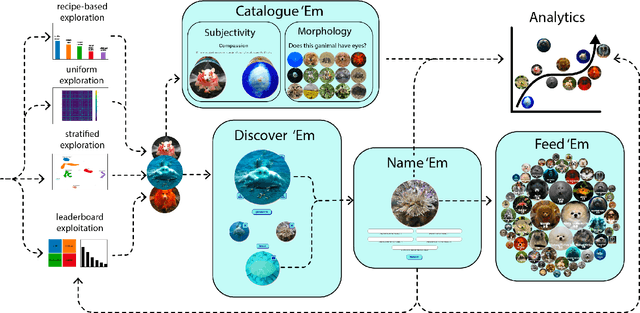
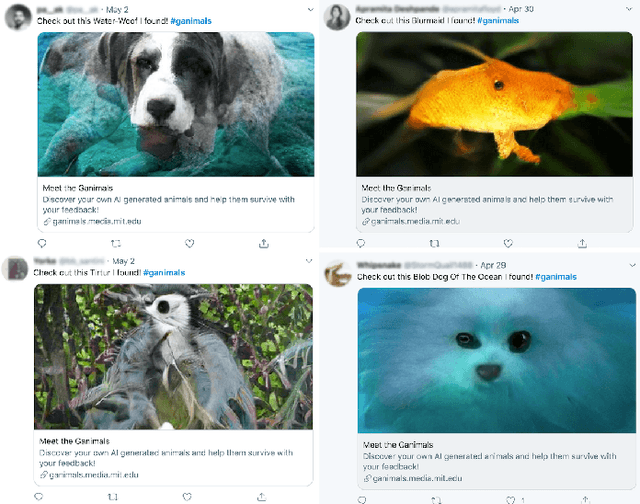
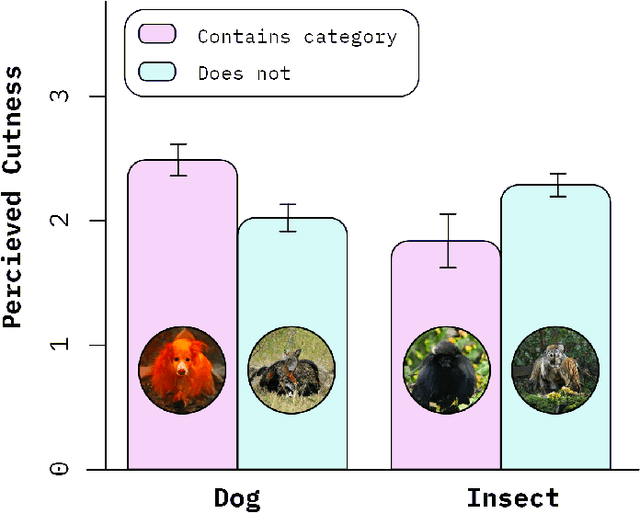
Abstract:The latent space modeled by generative adversarial networks (GANs) represents a large possibility space. By interpolating categories generated by GANs, it is possible to create novel hybrid images. We present "Meet the Ganimals," a casual creator built on interpolations of BigGAN that can generate novel, hybrid animals called ganimals by efficiently searching this possibility space. Like traditional casual creators, the system supports a simple creative flow that encourages rapid exploration of the possibility space. Users can discover new ganimals, create their own, and share their reactions to aesthetic, emotional, and morphological characteristics of the ganimals. As users provide input to the system, the system adapts and changes the distribution of categories upon which ganimals are generated. As one of the first GAN-based casual creators, Meet the Ganimals is an example how casual creators can leverage human curation and citizen science to discover novel artifacts within a large possibility space.
Human detection of machine manipulated media
Jul 06, 2019

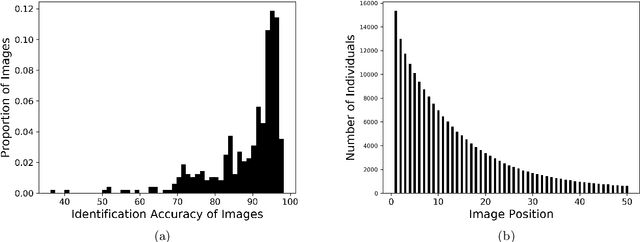
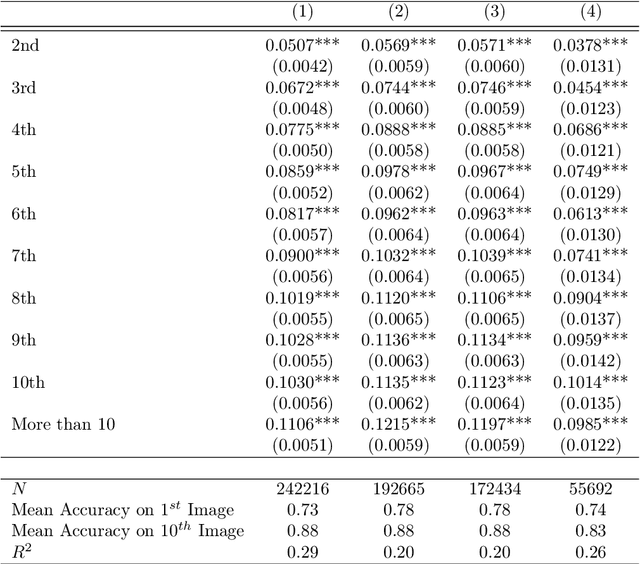
Abstract:Recent advances in neural networks for content generation enable artificial intelligence (AI) models to generate high-quality media manipulations. Here we report on a randomized experiment designed to study the effect of exposure to media manipulations on over 15,000 individuals' ability to discern machine-manipulated media. We engineer a neural network to plausibly and automatically remove objects from images, and we deploy this neural network online with a randomized experiment where participants can guess which image out of a pair of images has been manipulated. The system provides participants feedback on the accuracy of each guess. In the experiment, we randomize the order in which images are presented, allowing causal identification of the learning curve surrounding participants' ability to detect fake content. We find sizable and robust evidence that individuals learn to detect fake content through exposure to manipulated media when provided iterative feedback on their detection attempts. Over a succession of only ten images, participants increase their rating accuracy by over ten percentage points. Our study provides initial evidence that human ability to detect fake, machine-generated content may increase alongside the prevalence of such media online.
Closing the AI Knowledge Gap
Mar 20, 2018
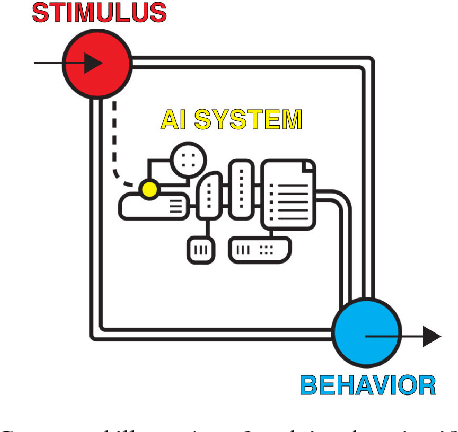
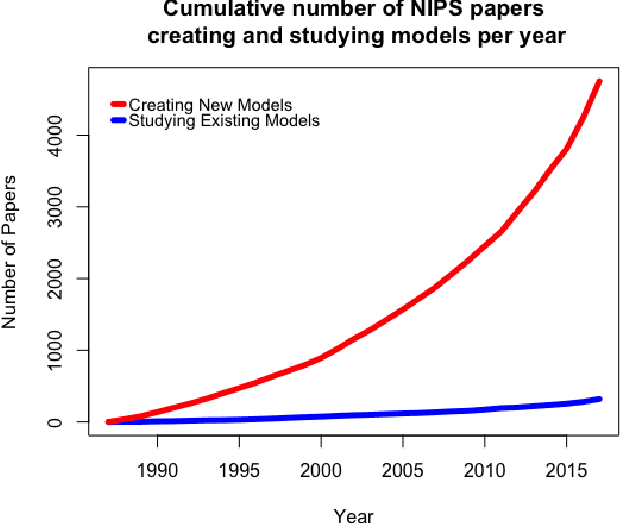
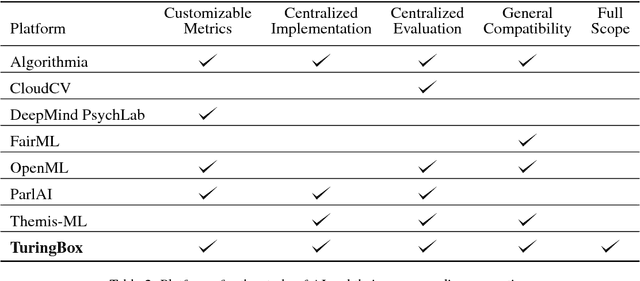
Abstract:AI researchers employ not only the scientific method, but also methodology from mathematics and engineering. However, the use of the scientific method - specifically hypothesis testing - in AI is typically conducted in service of engineering objectives. Growing interest in topics such as fairness and algorithmic bias show that engineering-focused questions only comprise a subset of the important questions about AI systems. This results in the AI Knowledge Gap: the number of unique AI systems grows faster than the number of studies that characterize these systems' behavior. To close this gap, we argue that the study of AI could benefit from the greater inclusion of researchers who are well positioned to formulate and test hypotheses about the behavior of AI systems. We examine the barriers preventing social and behavioral scientists from conducting such studies. Our diagnosis suggests that accelerating the scientific study of AI systems requires new incentives for academia and industry, mediated by new tools and institutions. To address these needs, we propose a two-sided marketplace called TuringBox. On one side, AI contributors upload existing and novel algorithms to be studied scientifically by others. On the other side, AI examiners develop and post machine intelligence tasks designed to evaluate and characterize algorithmic behavior. We discuss this market's potential to democratize the scientific study of AI behavior, and thus narrow the AI Knowledge Gap.
 Add to Chrome
Add to Chrome Add to Firefox
Add to Firefox Add to Edge
Add to Edge